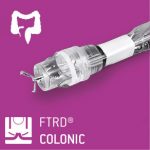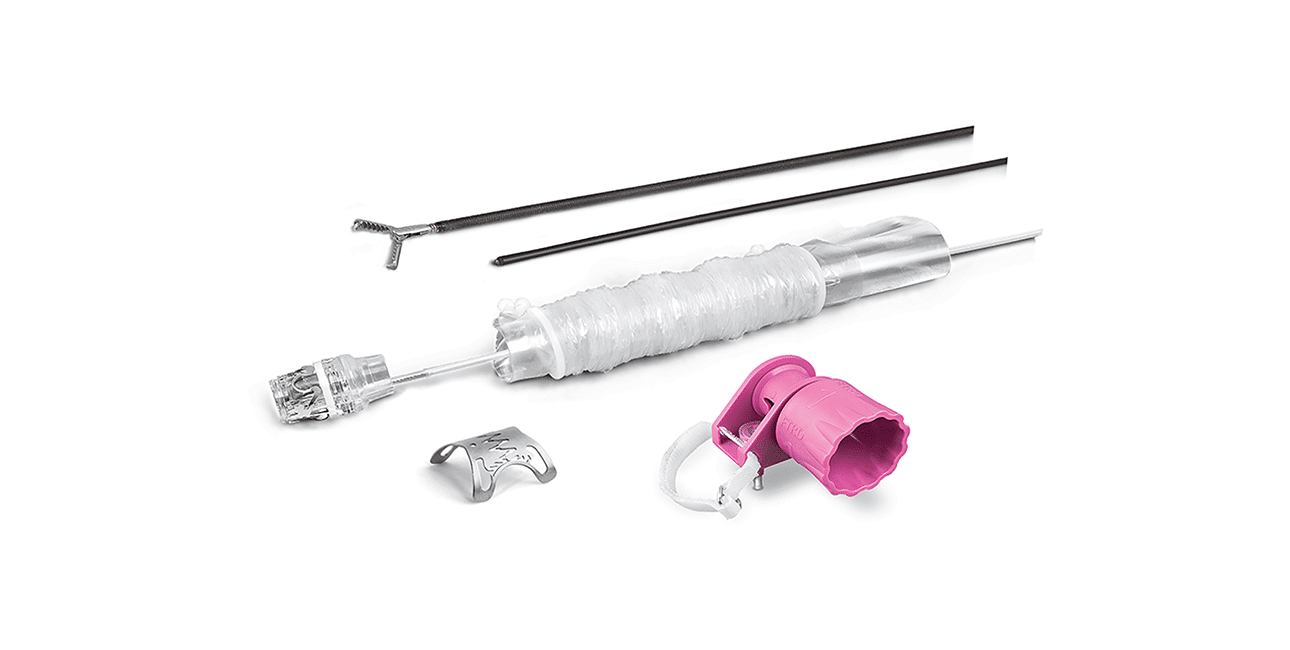Evaluation of the “German colonic FTRD registry” comprising 1178 colorectal FTRD procedures from 65 centers of different care levels demonstrated technical success in 88.2 % and R0-resection in 80.0 % of all cases. To date, this is by far the largest study of colorectal EFTR using FTRD.
B Meier et al., Ludwigsburg Hospital, Ludwigsburg, Germany, analyzed the German colonic FTRD registry to evaluate efficacy and safety of EFTR with the FTRD System in clinical routine.
Overall, 1178 colorectal FTRD procedures from 65 centers were included in the analysis. Median patient age was 69 years; lesions were located throughout colon (76.5 %) and rectum (23.5 %). 54.1 % of lesions were pretreated endoscopically. Main indication for EFTR was “difficult adenoma” in 67.1 %, defined as adenoma not amenable to conventional endoscopic resection, such as non-lifting lesions or lesions located at difficult anatomic locations. Other indications for EFTR were early carcinomas (18.4 %), subepithelial tumors (6.8 %), and diagnostic EFTR (1.3 %). Mean lesion diameter was 15 mm, median procedure time was 35 minutes.
In the total cohort, 88.2 % of EFTR procedures were technically successful (complete macroscopic resection); full-thickness resection (visibility of all layers of the colonic wall including serosa within the resection specimen) was histologically confirmed in 89.9 % of all cases. R0-resection was achieved in 80.0 % of all cases. There was no significant difference for R0-resection between colon and rectum (78.9 % vs 83.6 %, P = 0.11) or between lesions < 20 mm and ≥ 20 mm (77.6 % vs 81.0 %, P = 0.2).
Procedure-related adverse events occurred in 142 patients (12.1 %), thereof bleeding in 84 patients (which could be managed endoscopically in all but one case), perforation in 29 patients (11 managed endoscopically, 18 surgically), and inflammation/ infection in 15 patients (80 % successfully managed with antibiotics). In 3.1 % of all patients adverse events were classified as major events and 2.0 % of patients required surgical treatment due to adverse events. Endoscopic follow-up was available in 58.0 % and showed residual/recurrent lesions in 13.5 %, which could be managed endoscopically in most cases (77.2 %). In total, 96 patients of the total cohort (8.1 %) needed surgical therapy. In 62 patients (5.3 %), oncologic surgical resection was necessary, in 23 patients (2.0 %) surgery was due to adverse events and in 10 patients (0.8 %) surgery was required due to recurrent/residual adenoma, which could not be treated endoscopically.
The authors concluded that the study confirms favorable efficacy and safety of EFTR with the FTRD System in a real world setting. In more than 90 % of patients with “difficult-to-resect” colorectal lesions not amenable to conventional endoscopic resection surgery could be avoided. The registry data also shows that EFTR with the FTRD has gained broad acceptance in the endoscopic community and has become part of the clinical routine.
Efficacy and Safety of Endoscopic Full-Thickness Resection in the Colorectum: Results From the German Colonic FTRD Registry
Meier B, Stritzke B, Kuellmer A, Zervoulakos P, Huebner GH, Repp M, Walter B, Meining A, Gutberlet K, Wiedbrauck T, Glitsch A, Lorenz A, Caca K, Schmidt A .
Am J Gastroenterol 2020;115:1998–2006. https://doi.org/10.14309/ajg.0000000000000795
 |
 |


 Deutsch
Deutsch  Français
Français 